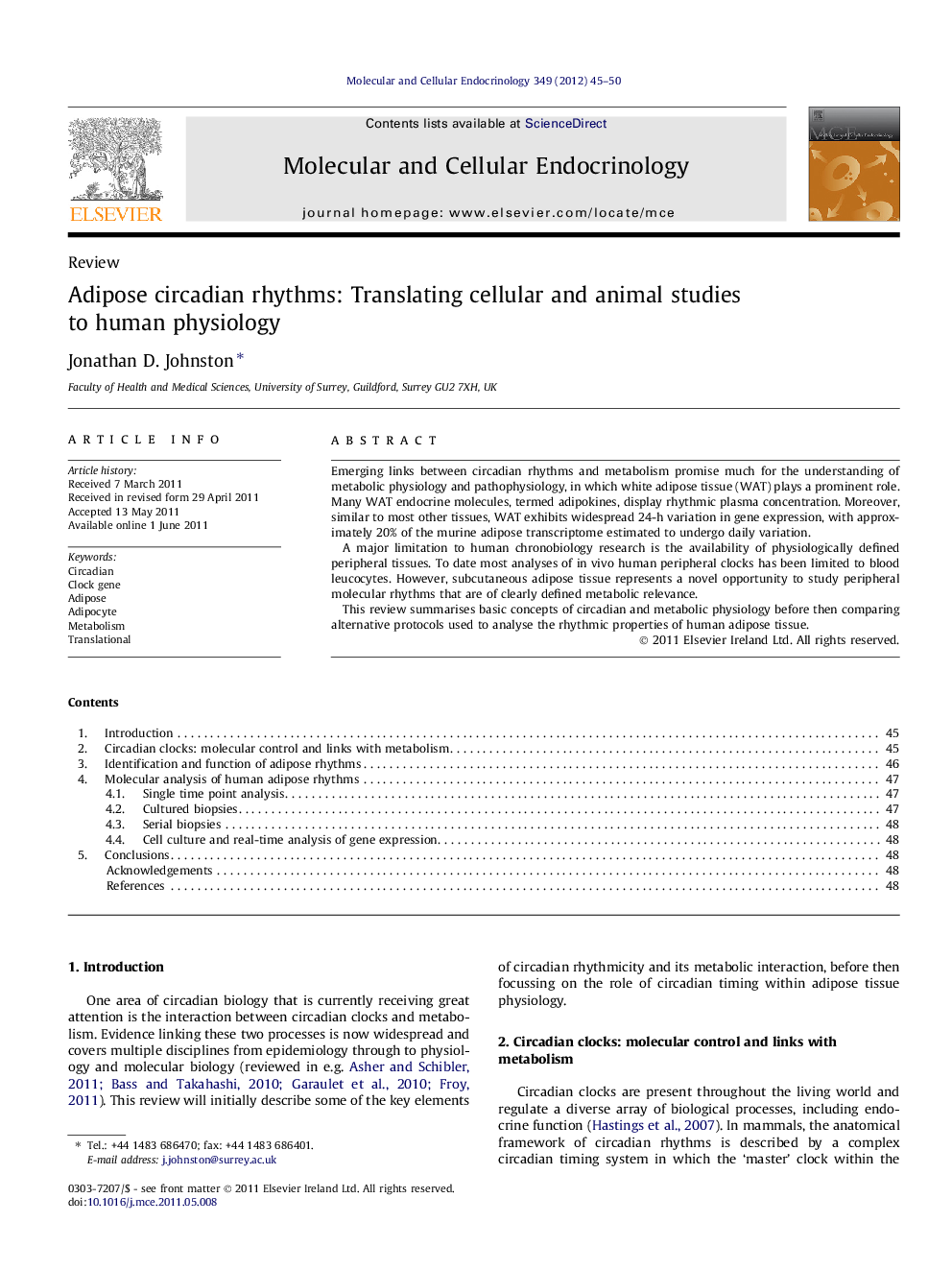| کد مقاله | کد نشریه | سال انتشار | مقاله انگلیسی | نسخه تمام متن |
|---|---|---|---|---|
| 2196442 | 1098821 | 2012 | 6 صفحه PDF | دانلود رایگان |

Emerging links between circadian rhythms and metabolism promise much for the understanding of metabolic physiology and pathophysiology, in which white adipose tissue (WAT) plays a prominent role. Many WAT endocrine molecules, termed adipokines, display rhythmic plasma concentration. Moreover, similar to most other tissues, WAT exhibits widespread 24-h variation in gene expression, with approximately 20% of the murine adipose transcriptome estimated to undergo daily variation.A major limitation to human chronobiology research is the availability of physiologically defined peripheral tissues. To date most analyses of in vivo human peripheral clocks has been limited to blood leucocytes. However, subcutaneous adipose tissue represents a novel opportunity to study peripheral molecular rhythms that are of clearly defined metabolic relevance.This review summarises basic concepts of circadian and metabolic physiology before then comparing alternative protocols used to analyse the rhythmic properties of human adipose tissue.
► Interaction between circadian and metabolic physiology provides exciting new opportunities for combating metabolic disease.
► Daily rhythms have been identified in both adipose tissue and cultured adipocyte cells.
► Multiple techniques now permit study of the regulation and function of adipose clocks in cellular, animal and human models.
Journal: Molecular and Cellular Endocrinology - Volume 349, Issue 1, 5 February 2012, Pages 45–50